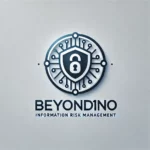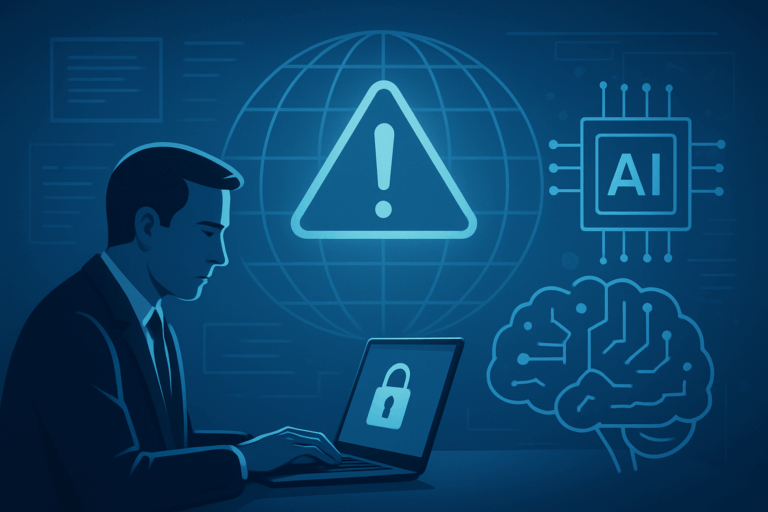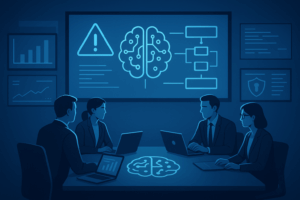🧠 Why Information Risk Deserves a Comeback in the Age of AI
Information Risk Management (IRM) used to be straightforward: protect data, limit access, and monitor for misuse.
But AI—and particularly Generative AI—has rewritten the rulebook. Models now consume, transform, and generate sensitive information faster than any human oversight process can keep up.
Whether through shadow AI, model drift, or data contamination, every new AI system introduces an invisible layer of information exposure.
And for organizations with regulatory obligations (financial services, healthcare, insurance), those risks are no longer theoretical—they’re operational.
📘 If you’ve been following Beyond1n0’s coverage, this builds directly on our earlier pieces:
⚠️ How AI Amplifies Information Risk
1. Data Leakage Through Generative AI Inputs
The biggest and most immediate risk comes from employees feeding sensitive data into public AI models.
In 2023, Samsung engineers reportedly uploaded proprietary source code to ChatGPT while debugging internal tools. That code became part of the model’s retraining dataset—exposing trade secrets to OpenAI’s systems.
📎 Reference: Forbes – Samsung Workers Accidentally Leaked Confidential Data to ChatGPT
What makes this worse is that traditional data loss prevention (DLP) tools aren’t built for LLM interactions. They can’t “see” what an employee types into ChatGPT or how that data might later reappear in model outputs.
2. AI Pipelines Multiply Data Access Points
In conventional systems, data flows are linear and auditable.
AI pipelines, however, combine structured and unstructured data, pull from APIs, and connect to third-party cloud services.
Each integration point—prompt logs, vector databases, fine-tuning datasets—creates new attack surfaces and compliance gaps.
Organizations often lose visibility once data leaves their internal boundary, violating principles of data minimization and purpose limitation under frameworks like GDPR or ISO 27001.
3. Information Drift: When Model Outputs Leak the Past
Large language models are trained on vast datasets and can inadvertently “remember” fragments of sensitive text.
Researchers at Google and DeepMind have documented “data extraction” attacks where models reproduce private training data word-for-word.
💡 This means that data leakage isn’t always input-based—sometimes, it’s an unintended output.
For risk and compliance teams, that means model explainability alone isn’t enough—you need data lineage tracking throughout the AI lifecycle.
4. Shadow AI: The Silent Multiplier of Information Exposure
When employees use unapproved AI tools, risk teams lose control of data boundaries.
A 2024 Cisco Data Privacy Benchmark Report found that more than 70% of employees admitted using GenAI tools without formal approval.
📎 Reference: Cisco 2024 Data Privacy Benchmark Study
This “Shadow AI” behavior mirrors early “shadow IT” patterns—only now, the information leaving the perimeter can be instantly stored, learned, or shared by external AI systems.
For a deeper dive into operational responses, see:
👉 Building an AI Escalation Playbook: Turning Oversight into Action
🧩 From Reactive to Proactive: Information Risk by Design
 1. Build a Data Boundary Policy for AI Tools
1. Build a Data Boundary Policy for AI Tools
Define what data can and cannot be used with public or enterprise AI models.
Classify data into risk tiers and align them with model access controls.
 2. Introduce AI-Aware Data Loss Prevention (DLP)
2. Introduce AI-Aware Data Loss Prevention (DLP)
Use tools that inspect and intercept LLM traffic, not just email or file transfers.
Vendors like Nightfall and Cyberhaven now offer GenAI-specific DLP controls to prevent sensitive data from being sent to third-party models.
 3. Extend Your Risk Register
3. Extend Your Risk Register
Information risk indicators should be integrated into your AI Risk Register—metrics like:
Percentage of employees using approved AI tools
Volume of data uploaded to GenAI endpoints
Number of override or red-flagged model outputs
You can learn more about this approach in our article:
 4. Add Escalation Triggers for Information Incidents
4. Add Escalation Triggers for Information Incidents
Not all AI data exposures are security breaches, but they should still trigger oversight.
An “AI Escalation Playbook” (covered in our previous article) can define when data exposure events are logged, reviewed, or escalated to compliance.
🔒 The New Role of Information Risk Management in AI Oversight
Information Risk isn’t just about encryption, firewalls, or access control anymore—it’s about visibility and accountability in data use.
As AI systems become embedded in daily workflows, the boundary between data use and data misuse blurs.
That’s why the most resilient organizations treat information risk as a living process, not a checklist item.
By embedding information risk controls directly into your AI governance framework, you turn compliance from a bottleneck into a strategic enabler of trustworthy AI.
🧭 Final Takeaway
AI doesn’t create new types of information risk—it amplifies the ones that already existed.
And if data is the new oil, then AI is the refinery that multiplies its volatility.
Managing AI responsibly starts by asking the oldest question in risk management:
“Do we know where our data is—and who’s using it?”


 1. Build a Data Boundary Policy for AI Tools
1. Build a Data Boundary Policy for AI Tools

